In the arrangement shown in figure the ends P and Q of an inextensible string move downwards with uniform speed u. Pulleys A and B are fixed. The mass M moves upwards with a speed

vcosθ
vcosθ
2vcosθ
2vcosθ
The correct Answer is:B
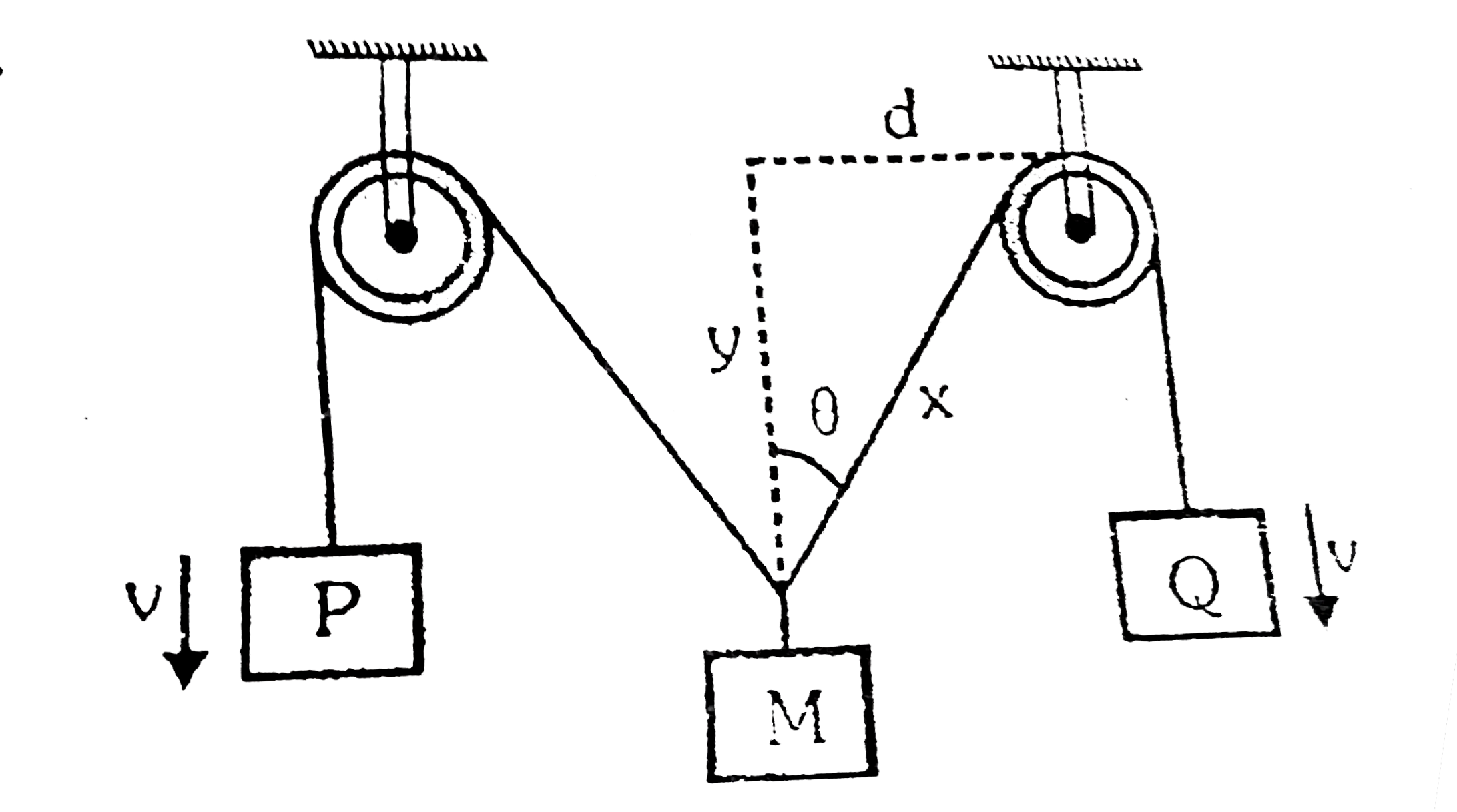
Here x2=y2+d2
So 2xdxdt=2ydydt⇒dydt=(xy)(dxdt)=(xy)(v)=vcosθ
OR
Component of velocity along string must be same
so vMcosθ=v⇒vM=vcosθ
Topper's Solved these Questions
- KINEMATICSBOOK - ALLENCHAPTER - KINEMATICSEXERCISE - EXERCISE-02
57 Videos
- KINEMATICSBOOK - ALLENCHAPTER - KINEMATICSEXERCISE - EXERCISE-03
6 Videos
- KINEMATICSBOOK - ALLENCHAPTER - KINEMATICSEXERCISE - Integer Type Question
3 Videos
- ERROR AND MEASUREMENTBOOK - ALLENCHAPTER - ERROR AND MEASUREMENTEXERCISE - Part-2(Exercise-2)(B)
22 Videos
- KINEMATICS (MOTION ALONG A STRAIGHT LINE AND MOTION IN A PLANE)BOOK - ALLENCHAPTER - KINEMATICS (MOTION ALONG A STRAIGHT LINE AND MOTION IN A PLANE)EXERCISE - BEGINNER S BOX-7
8 Videos
Similar Questions
Consider the arrangement shown in the figure. Find the acceleration of the block
(a) A monkey moves upward with respect to the rope with acceleration a0
(b) A monkey moves downward with respect to the rope with acceleration a0
Assume the surface smooth, pulley and string light.

View SolutionA weight W is tied to two strings passing over tha frictionless pulleys A and B as shown in the figure. If weights P and Q move downwards with speed v, the weight W at any instant rises with the speed :
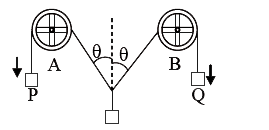
View Solution
Knowledge Check
In the arrangement shown in the Fig, the ends P and Q of an unstretchable string move downwards with uniform speed U. Pulleys A and B are fixed.
Mass M moves upwards with a speed
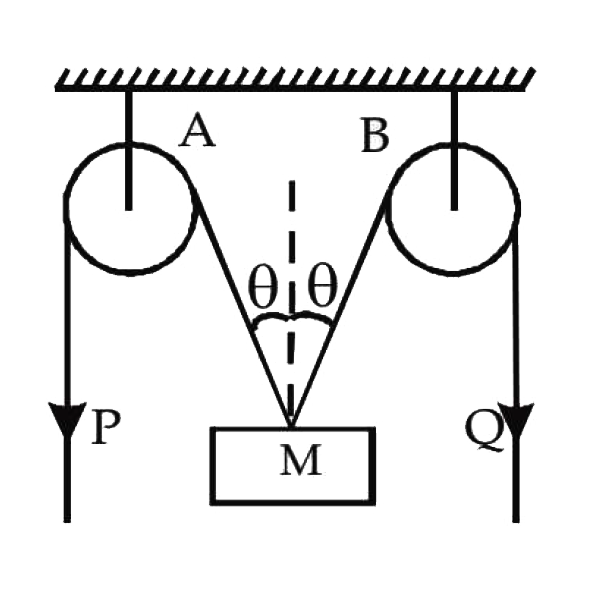 A2UcosθBU/cosθC2U/cosθDUcosθ
A2UcosθBU/cosθC2U/cosθDUcosθIn the arrangement shown in Fig the ends P and Qof an unstrechable string move downwards with uniform speed U pulley A and B are fixed Mass M moves upward with a speed
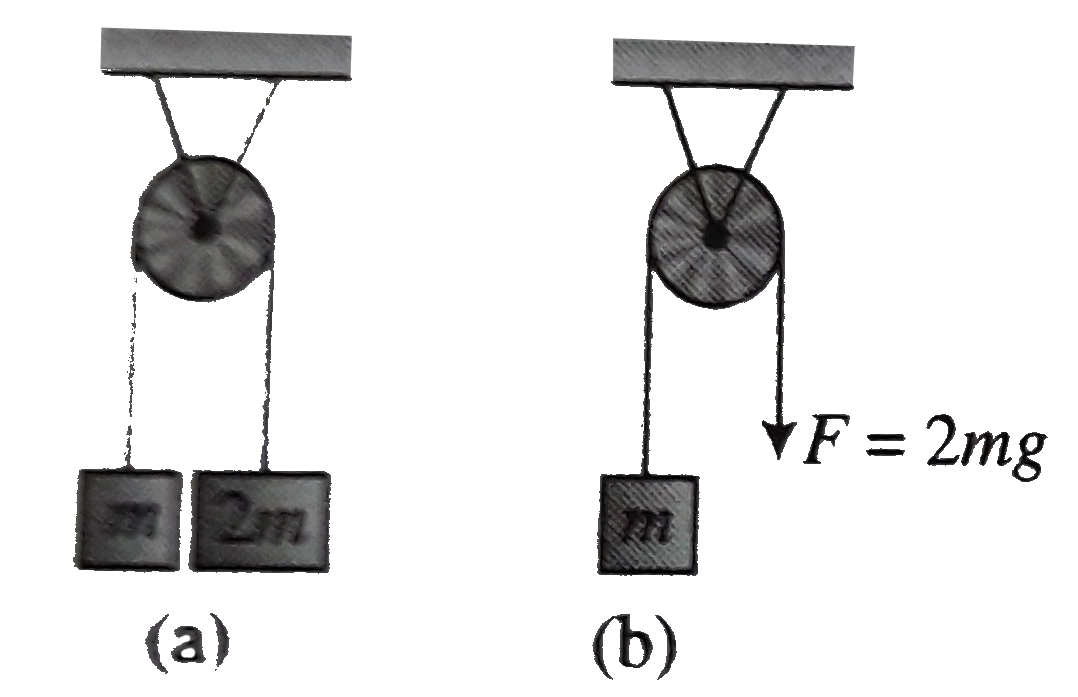 A2UcosθBU/cosθC2U/cosθDUcosθ
A2UcosθBU/cosθC2U/cosθDUcosθIn the arrangement shown, the pulleys are smooth and the strings are inextensible. The acceleration of block B is :
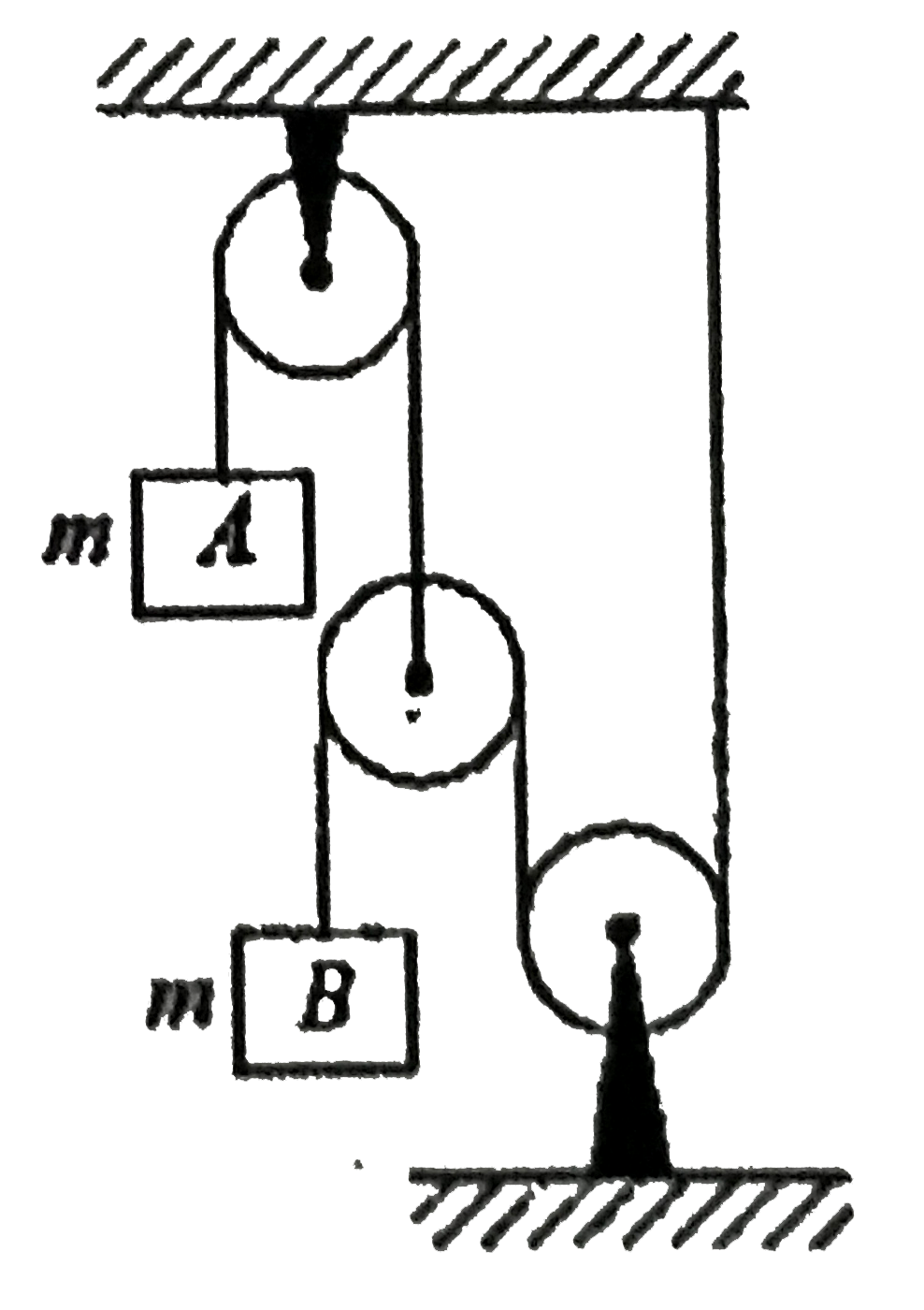 Ag/5B5g/5C2g/5D2g/3
Ag/5B5g/5C2g/5D2g/3
Two blocks A and B having masses m1=1kgm2=4kg are arranged as shown in the figure The pulleys P and Q are light and frictionless. All the blocks are resting on a horizontal floor and the pulleys are held such that strings remains just taut. At moment t=0 a force F=30 t (N) starts acting on the pulley P along vertically upward direction as shown in the figure The time when the blocks A and B loose contact with ground is 4/x sec then x is:

View SolutionTwo rings O and O' are put on two vertical stationary rods AB and A'B' respectively as shown in figure. An inextensible string is fixed at point A' and on ring O and is passed through O' moves downwards at a constant speed v, find the velocity of the ring O in terms of α.

View SolutionIn the figure shown a thin light inextensible string is wrapped around a uniform disc. One end of the strin is fixed to the ceiling of the lift and the other end is fied to the circumference of the disc. Acceleration 'a' of the lift is such that the centre of the disc not move with respect to ground. Find the value of ag. String does not slip on pulley.
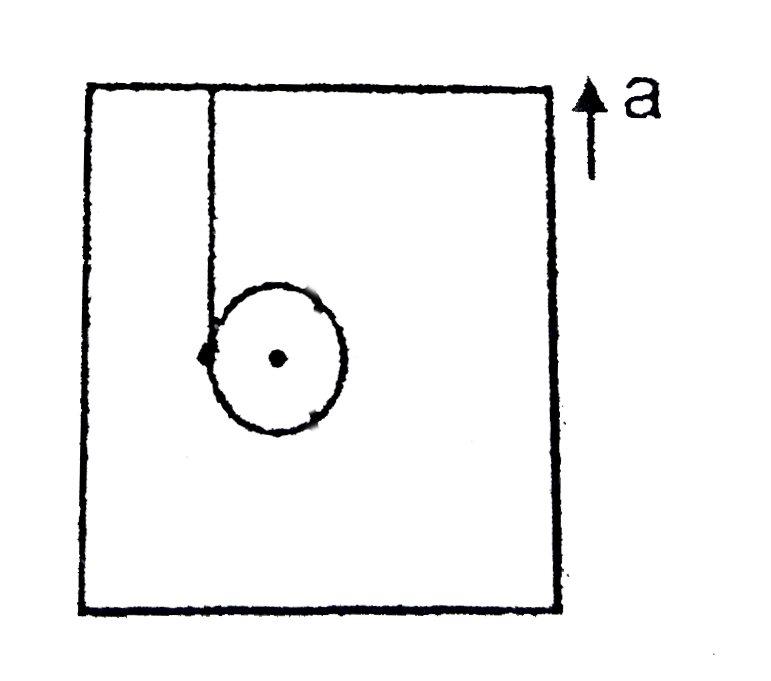
View SolutionIn the arrangement shown in figure-2.124 pulley A and B are massless and the thread is inextensible. Mass of pulley C is equal to m. If friction in all the pulleys negligible, then :
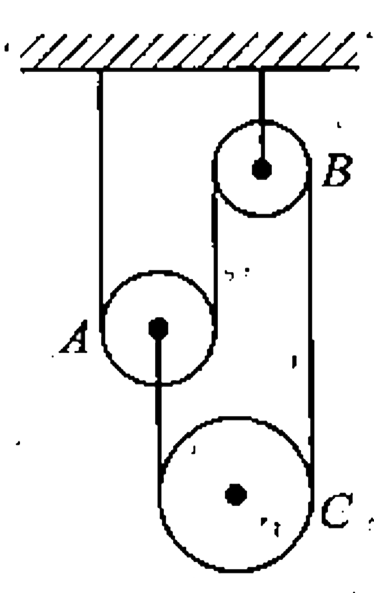
View SolutionP and Q are two identical masses at rest suspended by an inextensible string passing over a smooth frictionless pulley. Mass P is given a downward push with a speed v as shown in Fig. It collides elastically with the floor and rebounds immediately. What happens immediately after collision?
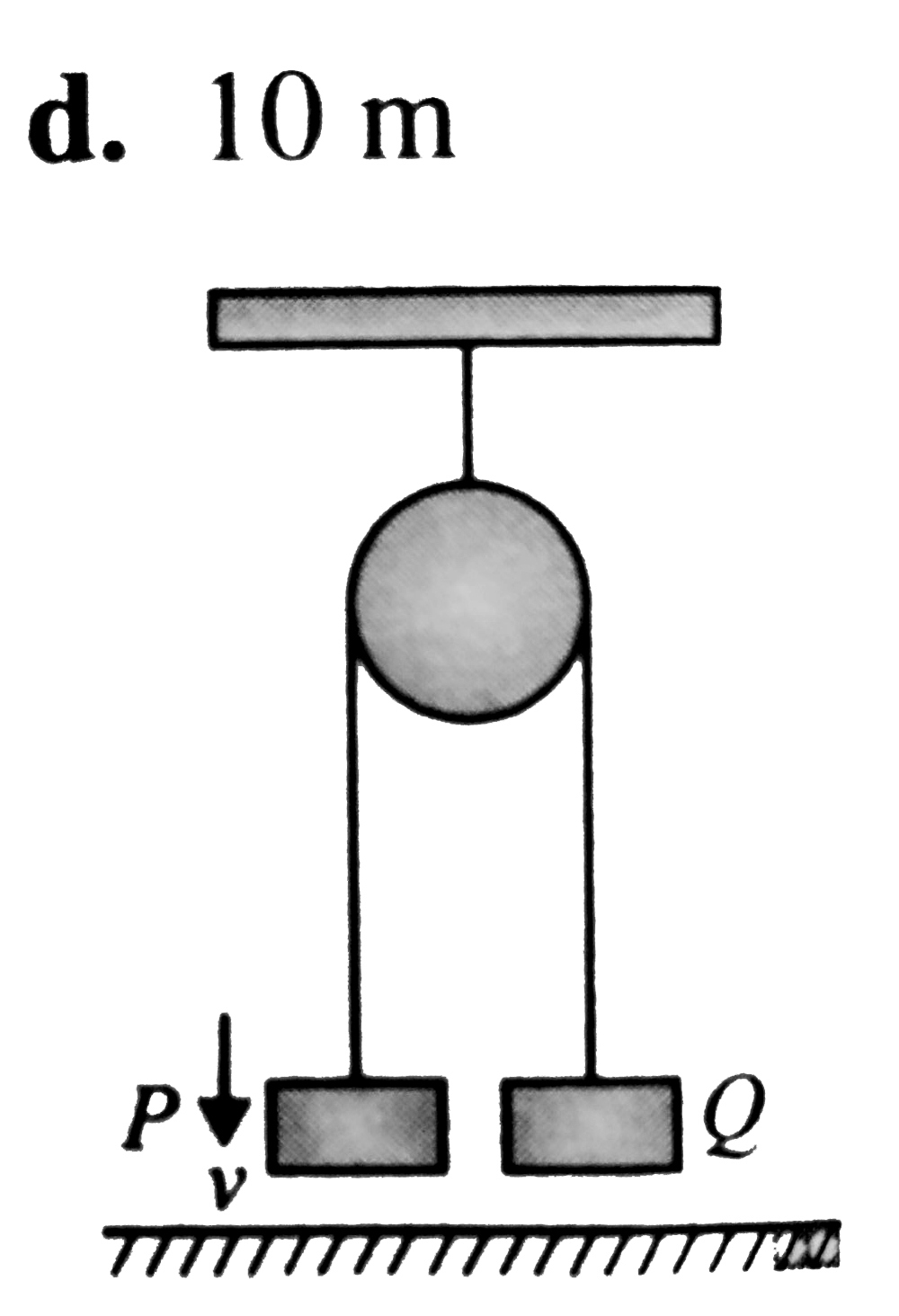
View Solution
